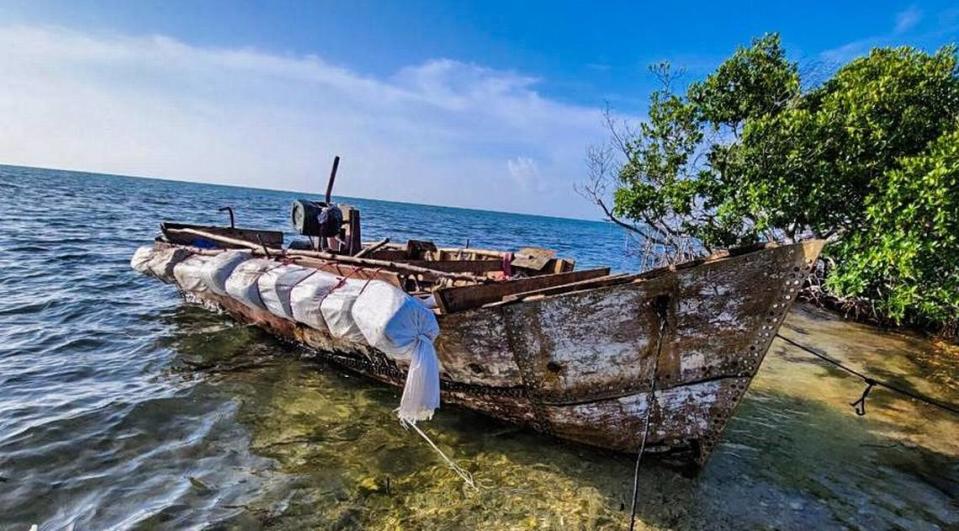Cuban migrant landings continue in the Keys. This time, five people made it on a raft
Cuban migrants continue to reach the Keys by sea, despite the danger of using makeshift boats across the Florida Straits coupled with the strong likelihood that if they make it to land, they will be sent back.
Early Tuesday morning, five Cubans on a homemade raft landed in Key West, the U.S. Border Patrol said.
The group arrived by the Southernmost Point marker, the tourist landmark that resembles a giant buoy at Whitehead and South streets. They said they left Artemisa, Cuba, the day before, said Border Patrol spokesman Adam Hoffner.
“Members of the group were interviewed and processed for removal proceedings,” Hoffner said in an email.
So far in October, Border Patrol have reported five Cuban migrant landings in the Keys totaling 60 people. That number includes 20 people who landed near Grassy Key on Oct. 17.

On Oct. 10, 17 Cubans arrived in Key West near Smathers Beach. A local man videotaped them wading in the ocean toward the seawall, where police officers and others waited to pull each one up to safety.
These migration attempts spiked in 2021, with the Coast Guard reporting stopping 838 Cuban migrants. A year earlier, the number was only 49.
The federal government tracks migration by the fiscal year, which starts Oct. 1. Since the new fiscal year began this month, the Coast Guard has caught 210 people from Cuba trying to reach the U.S.
Experts have said the maritime migration attempts have risen due to the economic, political and healthcare crises in Cuba.
But there is no longer a political incentive to make the risky journeys.
The so-called “wet-foot, dry-foot” policy that allowed Cuban migrants who set foot on U.S. land above the high-water mark to stay in the country and apply for permanent residency ended in early 2017. Those caught at sea were taken back to Cuba.
President Barack Obama ended that policy in January 2017.
Early this morning, 5 Cuban migrants made landfall on a homemade raft in the Florida Keys. #BorderPatrol Agents & local partners responded to a maritime smuggling event in #KeyWest & took the migrants into federal custody.#Cuba #Florida #News pic.twitter.com/tnUytitbXm
— Chief Patrol Agent Thomas G. Martin (@USBPChiefMIP) October 26, 2021
Now, all Cubans attempting to enter the U.S. without a visa are returned unless they can prove to U.S. immigration officials that they have a well-founded fear of political persecution.
The Coast Guard can determine a migrant has what is called a “valid manifestation of fear” of being forced to return home.
On Aug. 2 the Coast Guard stopped a vessel with 20 people aboard near Cuban waters.
The Coast Guard said it determined one person had a credible fear of returning to Cuba and, without providing additional details, transferred the person to the “proper authorities.”

